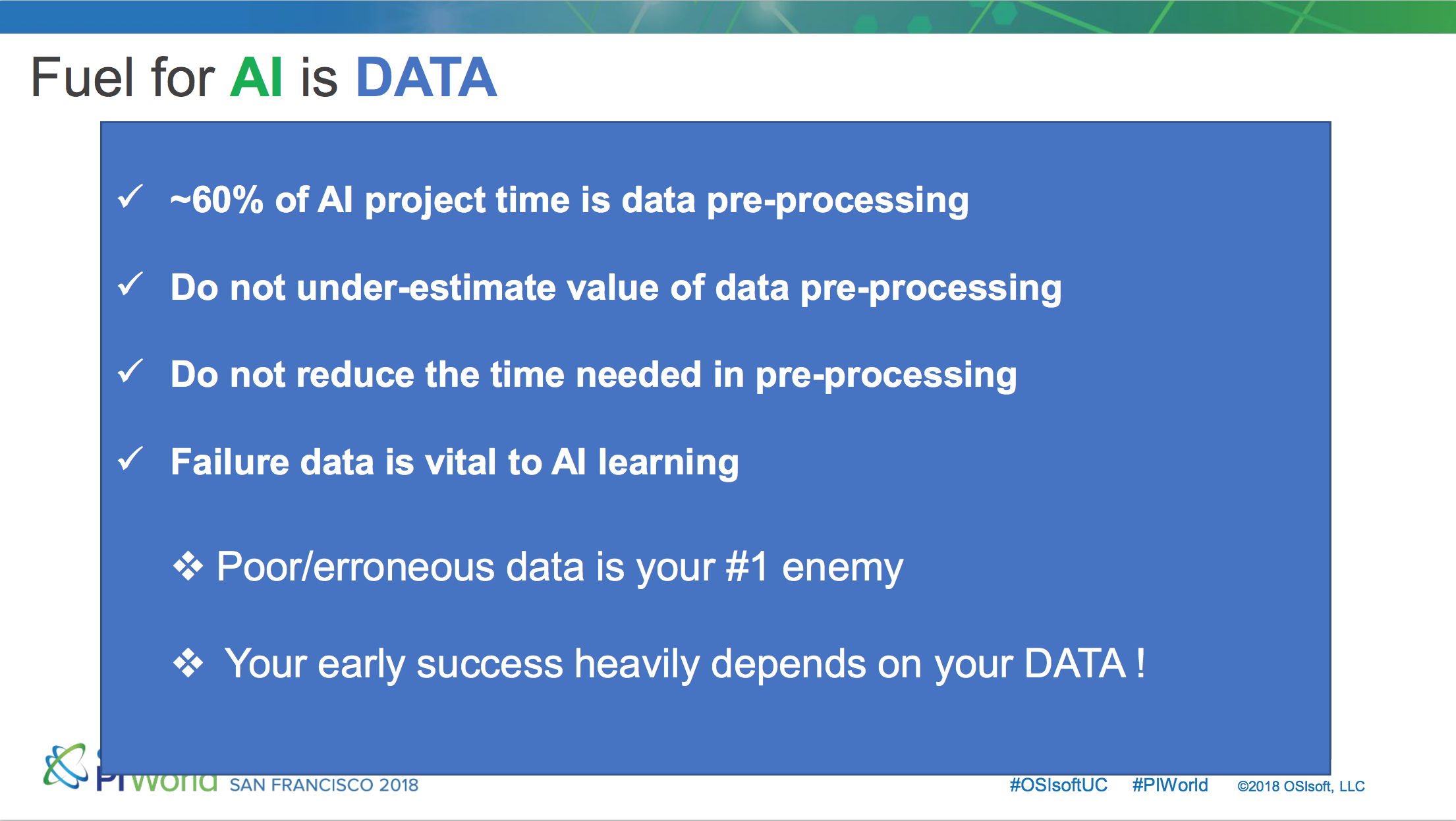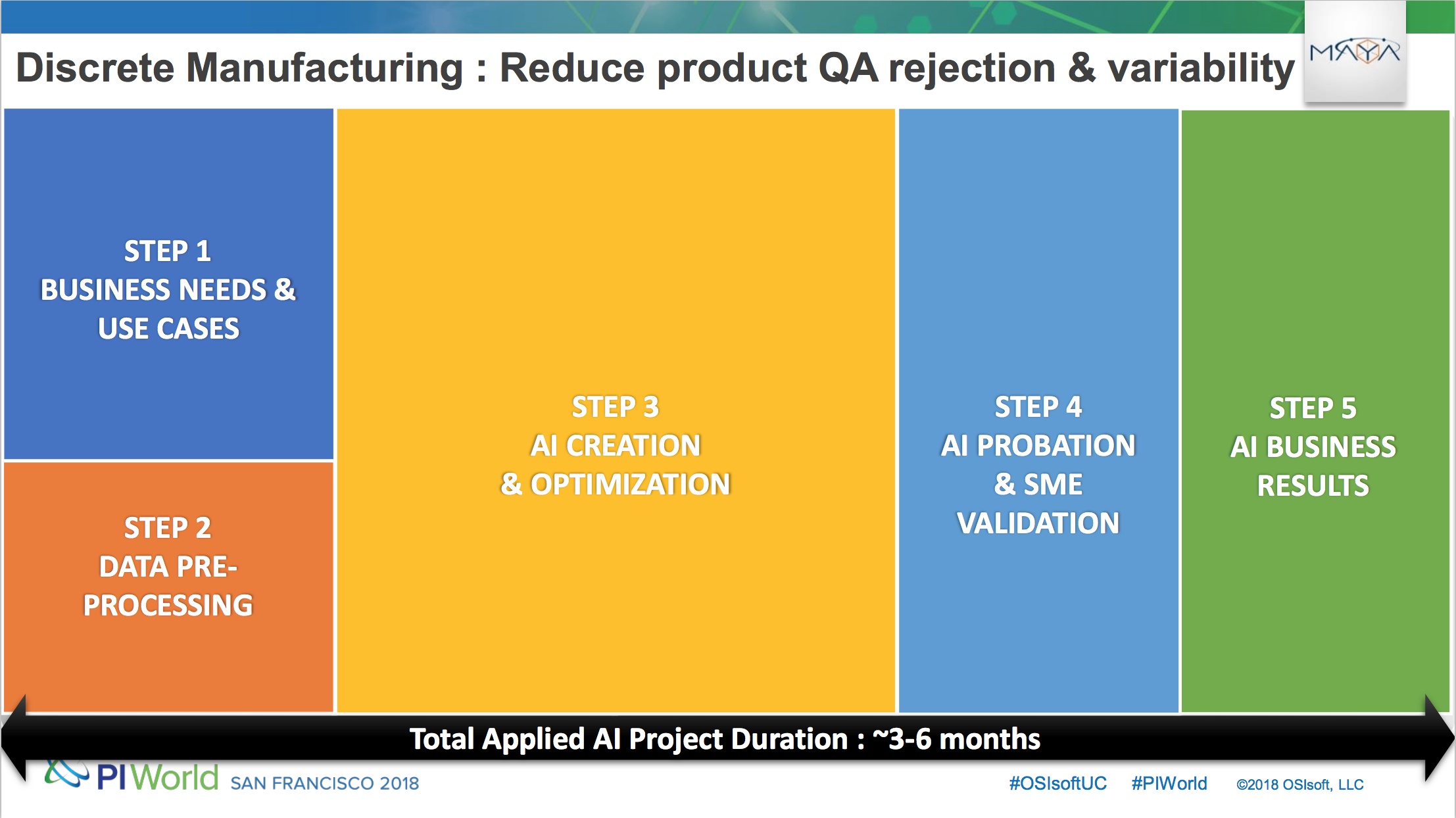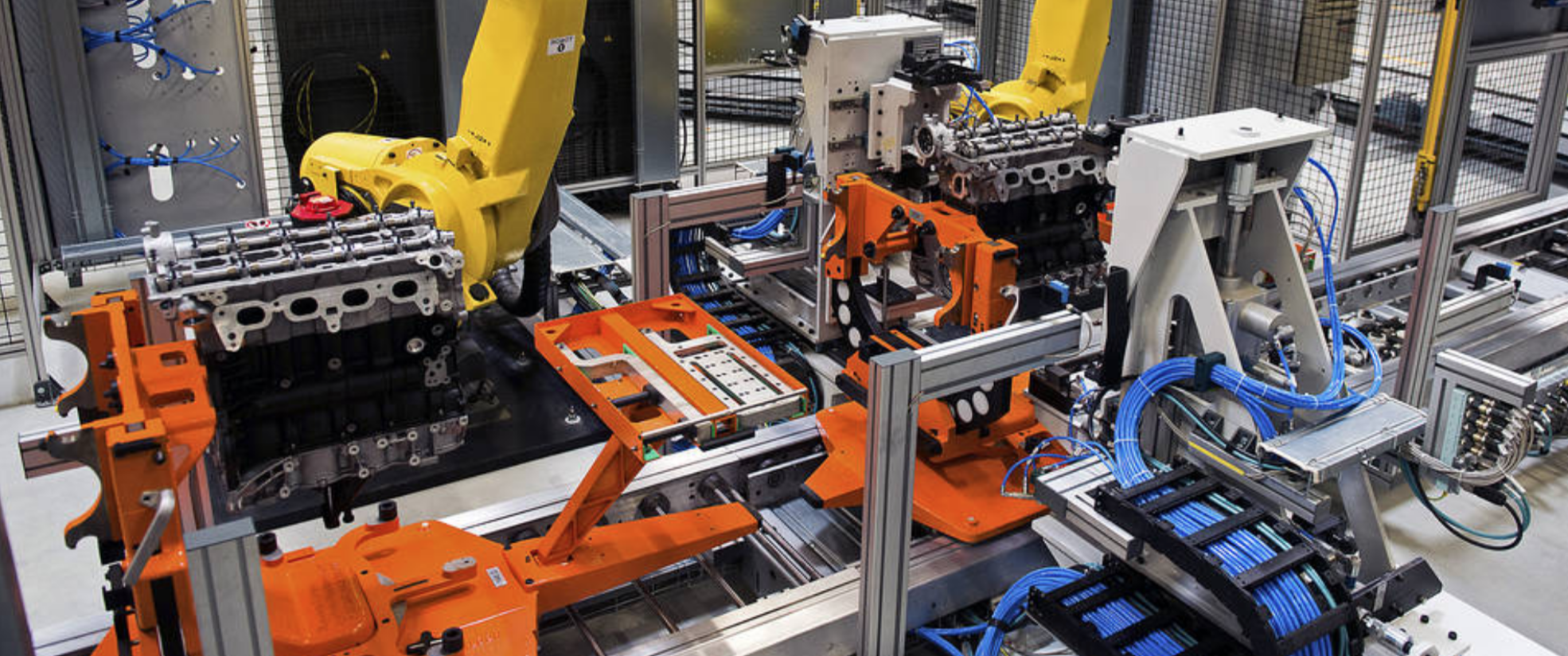Over the past decade, the industrial sector has seen major advancements in automation and robotics applications. Automation in both continuous process and discrete manufacturing, as well as the use of robots for repetitive tasks are both relatively standard in most large manufacturing operations (this is especially true in industries like automotive and electronics).
One useful byproduct of this increased adoption has been that industrial spaces have become data-rich environments. Automation has inherently required the installation of sensors and communication networks which can both double as data collection points for sensor or telemetry data.
According to Remi Duquette from Maya Heat Transfer Technologies (Maya HTT), an engineering products and services provider, huge industrial data volumes don’t necessarily lead to insight:
“Industrial sectors over the last two decades have become very data rich in collecting telemetry data for production purposes… but this data is what I call ‘wisdom-poor’… there is certainly lots of data, but little has been done to put it into productive business use… now with AI and machine learning in general we see huge impacts for leveraging that data to help increase throughput and reduce defects.”
Remi’s work at Maya HTT involves leveraging artificial intelligence to make valuable use of otherwise messy industrial data. From preventing downtime to reducing unplanned maintenance to reducing manufacturing error – he believes that machine learning can be leveraged to detect patterns and refine processes beyond what was possible with previous statistical-based software approaches and analytics systems.
During our interview, he explored a number of use-cases that Maya HTT is currently working on – each of which highlights a different kind of value that AI can bring to an existing industrial process.
This point is reiterated in an important slide from one of his recent presentations at the OsiSoft PIWorld Conference in San Francisco:

Use Case: Discrete Manufacturing
Increasing throughputs and reducing turnaround times are some of the biggest business challenges faced by the manufacturing sector today – irrespective of industry.
One interesting trend here was that individual machine optimization was the most common form of early engagement with AI for most manufacturers – and much more value can be gleaned from simultaneously optimizing the combined efficiencies of all the machines in a manufacturing line.
“There has been little that has been done to really help that industry to go beyond automation and statistical-based procedures, or optimizing individual machines.
What we find in our AI engagements is that – at the individual machine level – there is little that can be done, as it’s been fairly optimized… if we look at where AI can help significantly, it’s at looking at the production chain as a whole or combining different type of data to further optimize a single machine or a few machines together.”
In a typical discrete manufacturing environment today, we would likely find that there are over ten manufacturing stages and that data is collected at each stage from a plethora of devices. Remi explains that in such a scenario AI can today track correlations between many machines and identify patterns in the industrial data which can potentially lead to overall improved efficiency.
He adds some color here with a real-life example from one of Maya HTT’s clients. He elaborates that for one particular discrete manufacturer’s industrial process which faced high rejection rates, Maya HTT collected around 20,000 real-time telemetry variables and by analysing the data along with manufacturing logs and other non real-time production data, the AI platform was able to find what led to the high rejection rates.
“A discrete manufacturing process with over 10 manufacturing stages – each collecting tons of data. Yet towards the end of the process there were still high rejection rates… In this case we applied AI to look at various processes throughout this ‘food chain’.
There were 20,000 real-time telemetry variables collected, and by correlating them and combining them with production data, the AI was able to learn which combinations and variance led to the rejection rate. In this particular case the AI was able to remove over 70% of the rejection issues.”
This particular manufacturing AI solution was able to quickly recognize faulty pieces so the machine operators could remove them from the process thereby reducing the work that the quality assurance team had to handle and leading to saved material and less real work hours spent detecting or correcting faulty pieces.
What this means in real business terms is that the manufacturer used fewer raw materials, had a lot less rework hours, which essentially translated to saving of half a million dollars per production line per year. “We estimated a savings of over $500,000 per year in this particular case”, said Remi.
Use Case: Fleet Management
Another such use-case that Remi explored was in fleet management or freight operations in the logistics sector where maintaining high fuel efficiency for vehicles like trucks or ships is essential for cost-savings in the long run.
Remi explains that AI can enable ‘real-time’ fleet management which would otherwise be difficult to achieve with plain automation software. Various patterns identified by AI from data, like weather or temperature conditions, operational usage, mileage, etc can potentially be used to pick out anomalies and recommend what the best route or speed would be in order to operate at the highest efficiency levels.
Remi agreed that no matter the mode of transportation used (trucks or ships, for example), some of the more common emerging use-cases for AI in logistics are around overall fuel consumption analysis for fleets.
“When you have a large fleet, it’s possible to mitigate a lot of loss by finding refinements in fuel use.” In cases of very large fleets, AI can simulate and potentially mitigate huge loss exposure by reducing fuel consumption for the fleet.
Use Case: Engineering Simulation
The last use-case that Remi touched on was 3D engineering simulations for design in the field of computational fluid dynamics.
Traditional simulation software can be fed input criteria like flow rates of fluids and can generate a 3D simulation which usually takes around 15 minutes to be rendered and involves a long, iterative, and often manual process.
Maya HTT’s team claims that it was able to deliver an AI tool for this situation resulting in getting simulation results time falling to less than 1 second. Maya HTT claims that this improvement of over 900x in efficiency gains (from 15 minutes to 1 second) during the design process enabled design teams to explore far more design variants than previously possible.
Phases of Implementation for Industrial AI

When asked about what business leaders in the manufacturing sector interested in adopting AI would need to do, Remi outlines a 5 step approach used at Maya HTT:
- The first step would be a business assessment to make sure any target AI project will eventually lead to significant business impact.
- Next businesses would need to understand data source access and manipulations that may be needed in order to train and configure the AI platform. This may also involve restructuring the way data is collected in order to enhance compatibility.
- The actual creation and optimization of an AI application.
- Training and conclusions from AI need to be properly explained and understood. The operational AI agent is put to work and final tweaks are made to improve accuracy to desired levels.
- Delivery and measurement of tangible business results from the AI solution.
In almost all sectors we cover, data preprocessing is an underappreciated (and often complex) part of an AI application process – and it seems evident that in the industrial sector, the challenges in this step could be significant.
A Look to the Future of Industrial AI
Remi believes that for the time being, industrial AI applications are safely in the realm of augmenting worker’s skills as opposed to wholly replacing jobs:
“At least for the short-medium timeframe… we augment people on the shop floor in order to increase throughput and production rates.”
He also stated that the longer-term implications of AI in heavy industry involve more complete automation – situations where machines not only collect and find patterns in the data, but take direct action from those found patterns. For example:
- A manufacturing line might detect tell-tale signs of error in a given product on the line (possibly from a visual analysis of the item, or from other information such as temperature and vibration as it moves through the manufacturing process), and remove that product from the line – possibly for human examination, or simply to recycle or throw out the faulty item.
- A fleet management system might detect a truck with unusual telemetry data coming from its breaks, and automatically prompt the driver to pull into the nearest repair shop on the way to the truck’s destination – prompting the driver with an exact set of questions for the diagnosing mechanics.
He mentions that these further developments towards autonomous AI action will involve much more development in the core technologies involved in industrial AI, and a greater period of time to flesh out the applications and train AI systems on huge sets of data over time.
Many industrial AI applications are still somewhat new and bespoke. This is due partially to the unique nature of manufacturing plants or fleets of vehicles (no two are the same), but it’s also due to the fact that AI hasn’t been applied in the domain of manufacturing or heavy industry for as long as it has been in the domains of marketing or finance.
As the field matures and the processes for using data and delivering specific results become more established, AI systems will be able to expand their function from merely detecting and “flagging” anomalies (and possibly suggesting next steps), to fully taking next steps autonomously when a specific degree of certainty has been achieved.
About Maya HTT
Maya HTT is a leading developer of simulation CAE and DCIM software. The company provides training and digital product development, analysis, testing services, as well as IIoT, real-time telemetry system integrations, and applied AI services and solutions.
Maya HTT is a team of specialized engineering professionals offering advanced services and products for the engineering and data center world. As a Platinum level VAR and Siemens PLM development partner and OSIsoft OEM and PI System Integration partner, Maya HTT aims to deliver total end-to-end solutions to its clients.
The company is also a provider of specialized engineering services such as Advanced PLM Training, Specialized Engineering Consulting for Thermal, Flow and Structural projects as well as Software Development with extensive experience implementing NX Customization projects.
This article was sponsored by Maya HTT, and was written, edited and published in alignment with our transparent Emerj sponsored content guidelines. Learn more about reaching our AI-focused executive audience on our Emerj advertising page.
Header image credit: Fanuc


















